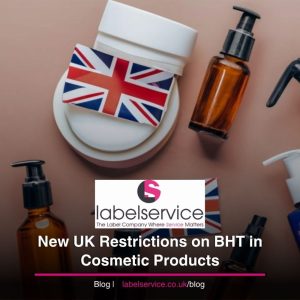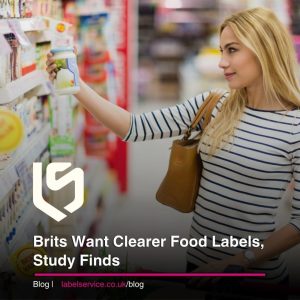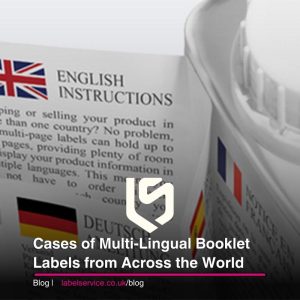Since new regulations on HFSS (High in Fat, Salt, or Sugar) foods were first announced, questions have abounded about what the rules mean for retailers and brands, who is affected and when the different bans will come into effect.
“It’s been a particularly complex set of rules to navigate, and there have been changes to the guidelines and timeline along the way,” says Liam Keogh, co-founder of food, drink and hospitality PR and influencer marketing agency Palm PR.
Before diving into the details of the regulations, it’s important to understand what HFSS means. As an agency that looks after numerous food and drink businesses, from traditional names like Grey Poupon to trendy upstarts like non-alcoholic drink maker L.A. Brewery, Liam explains that a significant part of his job has been ensuring brands understand the rules.
The HFSS rules aim to restrict the promotion of less healthy food and drink products as part of the government’s pledge to reduce obesity and improve health. “As a result, there are many products that fall into this, like sugary drinks, salty snacks and processed foods. However, there are carve outs (for example, honey covered nuts),” Liam explains.
It’s important for retailers and brands to understand the legislation and exemptions before considering marketing products, choosing new stock or making new product development decisions.
Examples of HFSS food and drink covered by the regulations include:
- Soft drinks with added sugar
- Crisps
- Granola
- Sweet popcorn
- Chocolate-coated nuts
- Chocolate bars
- All sponge cakes
- Cereal bars
Examples of food and drink which are not covered by the regulations include:
- Nuts and seeds
- Fruit-based snacks
- Meat jerky
- Drinks without added sugar
- Sugar-free sweets
- Non-prepackaged foods (eg loose bakery items)
In England, the regulations cover the placement of promotions in store, multibuy promotional offers such as BOGOF (buy one get one free), and advertising online and on TV before 9pm. The regulations apply to retailers with 50 employees or more. Shops with a square footage of less than 2,000 are exempt from the location restrictions. Chocolatiers, confectioners or cake stores are also exempt from location restrictions, but they must comply with price promotion rules. Wholesalers that only sell food to other businesses are exempt, but if they sell directly to consumers they must comply with the regulations.
Wales has also announced legislation to restrict the placement and price promotion of HFSS products, which will be introduced in 2024 and rolled out across the country by 2025. The Welsh government said it aimed to align its rules with the same products included within England’s legislation, however the types and sizes of businesses impacted was not stated. Scotland last year held a consultation on restricting promotions on HFSS food and drink.
The regulations on HFSS foods date back to 2018 when then-prime minister Theresa May launched a consultation on restricting the promotion of less healthy food and drink. The restrictions were originally due to come into force in April 2022, but the timeline has been pushed back several times as retailers and food producers said details remained unclear, and due to the cost-of-living crisis.
In October 2022, the ban on HFSS products in prominent store locations began. These regulations were aimed at retailers, and ruled that they couldn’t put HFSS products within two metres of a checkout area, within two metres of a designated queuing area, in the end of aisle display or at the entrance of the store.
The ban on HFSS promotions, which was due to come into effect in October 2023 has been pushed back to October 2025, and a ban on advertising HFSS foods online and on TV before 9pm was set to come into force in January 2025, having been delayed from a January 2023 deadline.
Who is and isn’t affected in the fine food world?
While the smallest independent retailers will not have to delve into the fine print of these regulations, larger SMEs should look into what the rules mean for them. “The HFSS legislation…applies to the products sold in retail outlets with more than 50 employees, which obviously covers a large part of the market and will have an impact on the fine food world,” Liam says. He adds that for smaller and independent brands, the legislation is a “double-edged sword”.
“On one hand, their size makes them more agile and quicker to adapt and they don’t have to worry about the ingrained identity or legacy that the products of larger brands might have. They also benefit from the fact that the rules only apply to brands with less than 250 employees and retailers with less than 50 employees.
“On the other hand,” he continues, “making changes to packaging and the formulation of products is an expensive and resource-intensive business, which smaller businesses can obviously be short on.”
For businesses that are nimble, however, he says the rules present an opportunity to gain traction with retailers over non-compliant brands or big brands that are slower to adapt. “Publicising brands to get them on retail buyers’ radars is something we’ve been tasked to do even more over the last couple of years to help make an impact in this area,” he says.
For example, Hannah McCollum, founder of ChicP, says her brand’s snack packs are making the most of the HFSS rules. “ChicP can emphasise its healthier product range in its marketing and brand positioning, potentially attracting consumers who are looking to reduce their HFSS intake.” She believes ChicP will continue to innovate and develop new products that comply with HSFF regulations to expand its range of healthier options available to consumers. “For me, it’s all about health and helping to reduce obesity in this country with more healthy snacks available.”
Liam adds that new entrants in the market have an advantage, too: “Very new brands are also making hay by making sure that the new products that they launch are within the HFSS rules from day one, which can give them a leg up with retailers at that crucial first stage.”
As well as affecting retailers stocking decisions, a big part of the upcoming regulations will impact brands’ advertising strategies. “A big part of the policy affects how products can be promoted, particularly through advertising and special offers,” Liam says. “This includes social media advertising, which we do a lot of, so we’ve had to provide a lot of advice on guidance on how to run successful marketing campaigns in this new landscape.”
Guidance for calculating NPM scores
The NPM uses a simple scoring system where points are allocated on the basis of the nutrient content of 100g of a food or drink. Points are awarded for both:
- ‘A’ nutrients (energy, saturated fat, total sugar and sodium)
- ‘C’ nutrients (fruit, vegetables and nut content, fibre and protein)
The score for ‘C’ nutrients is then subtracted from the score for ‘A’ nutrients to give the final NPM score.
In most instances, the NPM score will need to be calculated for products ‘as sold’ rather than as consumed. The same principle applies to products and meals sold by retailers, manufacturers and in out of home settings. Illustrative examples are below.
Note that where a product needs to be reconstituted before being consumed, the NPM score should be calculated based on 100g of the product reconstituted according to manufacturer instructions. This is particularly relevant for product mixes, such as cake mixes.
Examples for calculating NPM scores of products
Example 1: products that are pre-packed separately but then combined in a single outer packet (for example, granola with yoghurt). If either product is included in the schedule and has an NPM score of 4 or more, then the whole pre-packed product would be in scope of the restrictions.
Example 2: products that are composed of multiple pre-packed items all packaged together and sold as one product (for example, a hamper). If at least one item in the multipack is included in the schedule and has an NPM score of 4 or more, then the entire multipack would be in scope of the restrictions. In other words, each item is assessed individually to determine its NPM score and if one item has a score of 4 of more then the whole package of items would be in scope of the restrictions.
Example 3: items that are ordered from a menu in an out of home setting as a complete meal, either by themselves or together with other products ordered from the same menu, for example a burger in a bun with chips. If any item in the meal is included in the schedule, then it may be in scope of the restrictions depending on its NPM score. If the nutrition information is available for the meal as a whole then, for the sake of pragmatism, the NPM score should be calculated on this basis.
However, if the nutrition information is available for the individual items that form the complete meal, then the NPM score should only be calculated for the component or components included in the schedule. If any of these components have an NPM score of 4 or more (either the burger in a bun or the chips or a meal with a dipping sauce), then the whole meal would be in scope of the restrictions.
In an age where our screens are constantly flooded with ads, it’s no surprise that what we see shapes what we eat. From sugary cereals to salty snacks, the marketing machine behind less healthy food and drink products is powerful—and it’s targeting the most vulnerable among us: children and teens.
Now, governments and health advocates worldwide are taking a stand, pushing for restrictions on how and when these products can be advertised, especially on TV and online platforms. But why all the fuss?
Advertising works. If it didn’t, companies wouldn’t pour billions into it each year. Studies have shown that exposure to junk food ads increases the likelihood of children choosing those products, eating more calories overall, and developing unhealthy eating patterns that can follow them into adulthood.
What’s more concerning? Kids aren’t always able to distinguish between entertainment and advertising—especially online. Influencers promoting sodas, colourful cartoon ads for candies, and subtle product placements in YouTube videos are blurring the lines even further.
When we say “less healthy,” we’re talking about products high in fat, sugar, and salt (HFSS). These include:
- Sugary beverages like sodas and energy drinks
- Fast food meals and deep-fried snacks
- Sweet treats: chocolate bars, candies, pastries
- Highly processed foods loaded with additives and preservatives
While the occasional indulgence isn’t the issue, the problem lies in relentless exposure, especially during children’s peak screen time.
Countries that have implemented stricter advertising rules are already seeing results. For example:
- UK has banned junk food advertising on children’s TV since 2007 and is working on extending restrictions to digital platforms and prime-time TV.
- Chile introduced front-of-pack warning labels along with advertising restrictions, resulting in a measurable drop in sugary drink consumption.
By reducing the constant bombardment of tempting, less nutritious choices, these policies aim to help shift cultural norms around food—making healthy eating the default, not the exception. TV isn’t the only culprit anymore. Online platforms like YouTube, TikTok, and Instagram are where many kids now spend the bulk of their screen time—and food brands have followed them there. Targeted ads, algorithm-driven suggestions, and influencer marketing make it hard to escape the reach of junk food promotion.
Restricting these ads isn’t about censorship—it’s about creating a healthier environment where people, especially children, aren’t nudged into unhealthy habits by billion-dollar marketing campaigns.
To make meaningful change, restrictions should:
- Limit junk food ads during peak child viewing times
- Ban targeted online ads for HFSS foods to under-18s
- Require transparency in influencer marketing
- Promote healthier options through public campaigns
- Potentially change the rules on food and drink labelling
Advertising is a powerful tool—and like any tool, its impact depends on how it’s used. When it comes to public health, especially for our younger generations, it’s time we use that tool responsibly. Restricting the advertising of less healthy food and drinks is not about demonizing treats—it’s about giving people a fair shot at making better choices in a world full of noise

















